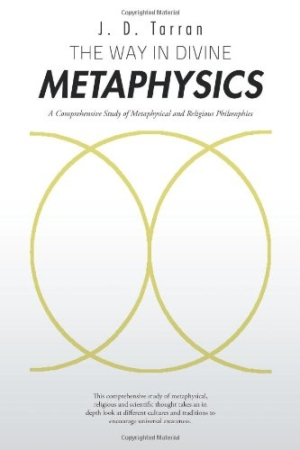The Way in Divine Metaphysics
A Comprehensive Study of Metaphysical and Religious Philosophies
In the realm of spirituality, the phrase “the way” refers primarily to two major images. In the Gospel of St. John, Jesus refers to himself as the way, the truth, and the light; and in traditional Chinese philosophy and Eastern religions, the Tao, usually translated as “the way,” is a fundamental concept about seeking truth. J. D. Tarran’s book The Way in Divine Metaphysics explores the concept of “the way” through the lenses of other cultures and religions.
Many chapters discuss traditional aspects of the Judeo-Christian community: the role of the prophets, the community of Essenes, and the writings of the apostles. Tarran’s prose is succinct and often contemplative in tone. Some chapters read more like individual meditations than as part of a narrative, although when people and events are discussed the prose resembles short encyclopedia entries.
Other chapters explore both well-known metaphysical systems and lesser-known cultures: Greek and medieval philosophies, the role of the shaman, “the way” of the Sufis, and the concept of Druidism. In several of these chapters, Tarran infers that these philosophies can be interpreted within a Christian framework. In the chapter concerning the shaman, Tarran asserts that, “In the broad definition of shamanism, the Lord Jesus himself was a divine shaman.” In the chapter named “The Way of the Sufis,” Tarran discusses the etymology of the Islamic word for God, which is Allah, and concludes that it is fundamentally the same word Christ used when he was crucified, which is Eloi. While these ideas are appealing, some of his interpretations are highly speculative. Tarran claims that “Lao Tzu seemed to anticipate Christ when he wrote, ‘He who loves the world as his body may be entrusted with the empire.’”
In the last section of the book, Tarran espouses his own metaphysical system, which he calls “equipoise” and defines as “the maintenance of natural overall balance, which implicitly informs balance in each individual system at every level, down to atomic balance.” Tarran discusses how equipoise can explain most scientific phenomenon, including magnetism, gravity, electricity, and nuclear physics.
While much of Tarran’s narrative is focused on philosophy, there are several instances when he inexplicably digresses into global politics. He ends the chapter on the Sufis with terse negative critiques of the Islamic fundamentalists who launched the terrorist attacks on September 11, 2001, and George Bush Sr., who proposed that the United States lead the movement for “the New World Order.”
At the end of his chapter detailing the progress of science after 1800, Tarran implies that scientists like Werner Heisenberg and Enrico Fermi, who worked on atomic bomb projects, were partially to blame for the German concentration camps. In the chapter “The Way into the New Age,” Tarran accuses Cardinal Pacelli of collaborating with the Nazis. He “was to become Pope Pious [sic] XII and condone, by this complicity and further silence, the Holocaust of the Jews.” While the Pope’s reaction to the Holocaust is worthy of analysis, study, and debate, Tarran’s observations seem glaringly out of place in a book about metaphysics.
Despite these political statements, philosophers and general readers of the history of religious thought will find many of Tarran’s observations insightful.
Reviewed by
Thomas H. Brennan
Disclosure: This article is not an endorsement, but a review. The publisher of this book provided free copies of the book and paid a small fee to have their book reviewed by a professional reviewer. Foreword Reviews and Clarion Reviews make no guarantee that the publisher will receive a positive review. Foreword Magazine, Inc. is disclosing this in accordance with the Federal Trade Commission’s 16 CFR, Part 255.

